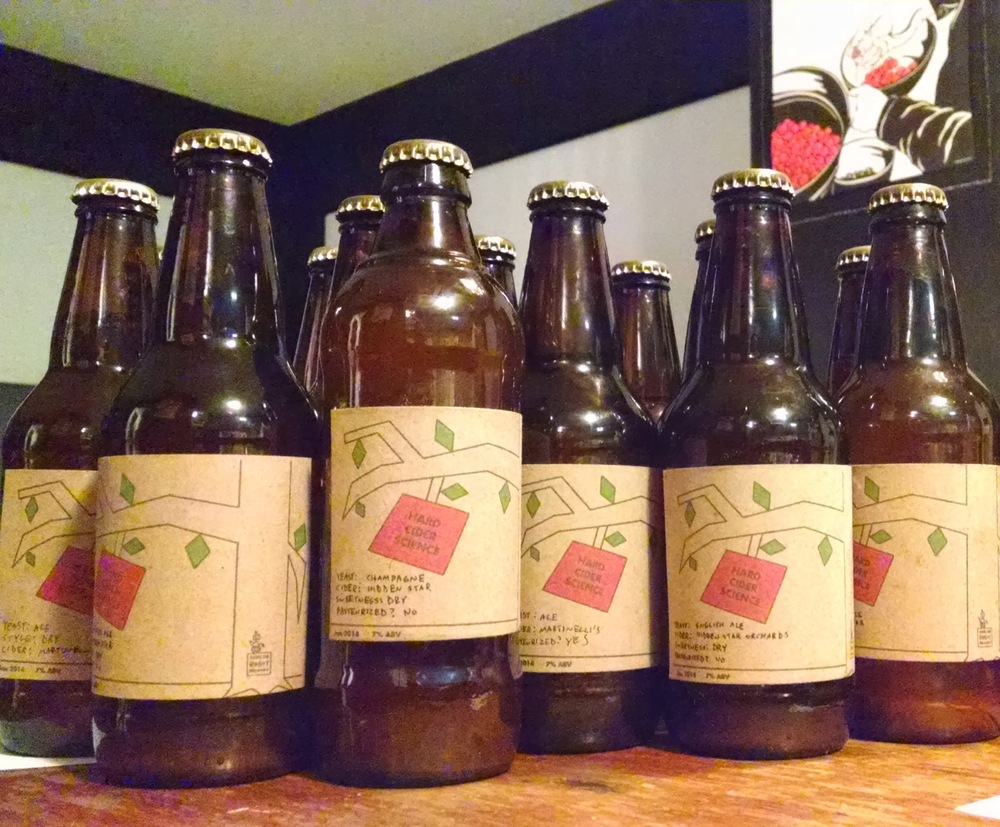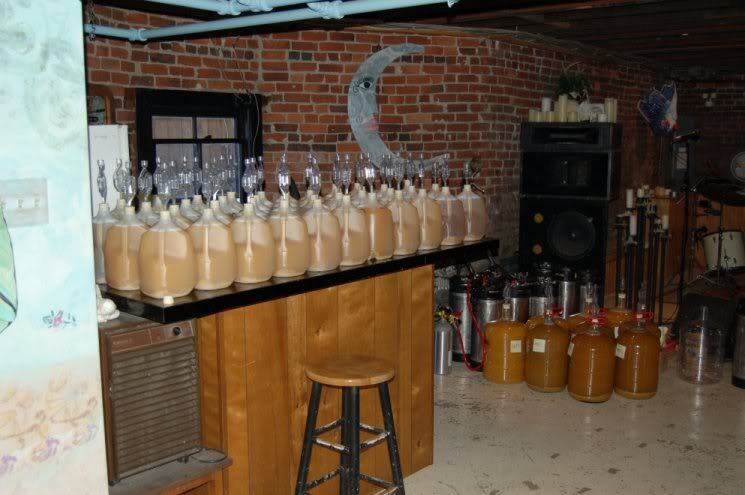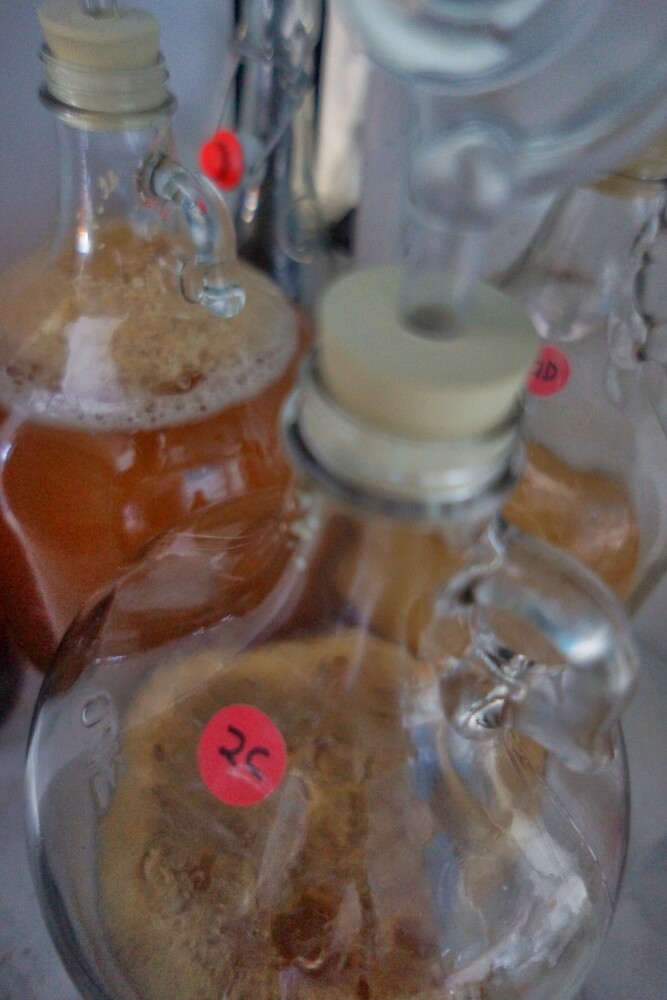I had four one gallon glass jugs and airlocks from the Rye ESB experiments (dosing with different hops and juniper), so I was on the lookout for another side by side brewing experiment. Then late last year I saw some fresh unpasteurized (rare!) cider at a farmers’ market and I had a project.
There are so many things you can vary in cider– pasteurized or unpasteurized starting cider, type of apple, yeast (natural, cider, ale, champagne), adding extra sugar pre-fermentation (which primarily just boosts the alcohol, not the sweetness, since the yeast consumes it all), sweet vs. dry, sparkling vs. still, and so on.
I decided to keep it simple this time and just make three batches, varying the source of cider, yeast used, and pasteurized vs. not, but staying with a simple dry, sparkling, no-extra-sugar style without any added flavorings. I made half a gallon to a gallon of each, and a month later bottled them (and of course couldn’t bottle something without making a custom label…). In a few months I’ll see how they turned out…
 This was all originally inspired by reading a stranger’s documentation of 80 one-gallon hard cider batches made with different yeasts, juices, and sugars:
This was all originally inspired by reading a stranger’s documentation of 80 one-gallon hard cider batches made with different yeasts, juices, and sugars: 
And to look up later– jotting down a few notes collected from reading and talking to people who’ve made cider:
- Hard cider was traditionally made with more tart, sour apples– modern eating apples aren’t really the ideal source of juice for it.
- You could make hard cider by just letting unpasteurized cider sit for months– the wild yeast on the skins will eventually ferment it, though you have less control over the final product and it could take a long time
- People also often add yeast to have more predictable fermentation, ranging from champagne yeast (a neutral taste, ferments it very dry like a wine) to beer ale yeasts, to cider yeasts (selected over time to not handle high alcohol levels well– more about that below)
- Unlike beer, which has a range of more complex sugars in the wort that yeast can not easily ferment (which leads to some residual sweetness and body after the fermentation is complete), the sugar in apple cider (like most fruit sugars and cane sugar) is simple and easily fermented. This means that unless you interrupt fermentation in some way (such as “cold crashing” – setting cider in the fridge to drop most yeast out of suspension, or adding something that kills the yeast), all the sugar will be fermented and you will end up with a completely dry cider with no sweetness (a final specific gravity of about 1.000). Some people like this, and older ciders were this way, but it’s a question of style.
- You can’t get a sweeter cider by just letting it ferment dry and then adding significant sugar before bottling– the residual yeast will ferment this sugar in the bottle, produce CO2, and eventually build up enough pressure to cause the bottle to shatter.
So generally, your easy options for some combination of sweetness and/or carbonation are either:
- A dry sparkling cider (let it ferment fully, then add a measured small amount of priming sugar before bottling, just as you would when bottling a beer– this sugar will be consumed by the residual yeast and produce the CO2 for carbonation). This is what I did for this batch.
- A sweet still cider (do something to halt the yeast before it fully ferments the cider, and then bottle– but with the yeast halted, no carbonation will be produced)
- A sweet carbonated cider through non-standard sugars (ferment dry, use yeast plus priming sugar to carbonate, and also add Splenda, xylitol, or some other non-sugar sweetener that the yeast can’t digest). I had no interest in using this sort of additive.
- Or, do what larger breweries do and brew a sweet, still cider, deactivate the yeast, then force carbonate it with a cylinder of CO2 in a keg.
- Some specially-bred cider yeasts have been selected over many generations to go dormant in the presence of moderate alcohol levels– so they stop working before every last bit of sugar has been fermented and leave a slight bit of sweetness.
